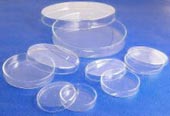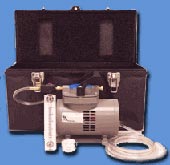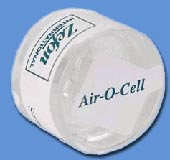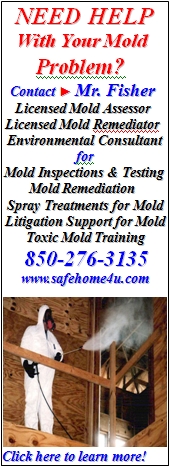SEMI featured on News 13 On Your Side
 Dangerous Mold
By: Carmen Coursey
Dangerous Mold
By: Carmen Coursey
News 13 On Your Side
Feb 18, 2003
I almost laughed when Bill Fisher, a mold inspector for AAA Advanced Air & Mold Solutions, Inc. , handed me a mask and goggles before our tour of a Panama City Beach home. But once inside, I was glad for the protection.
“This is the bathroom door, and as you can see, it’s just like the dining area door, covered with mold,” said Bill. And that was just the beginning of the moldy mess inside this home. “Over in the corner on the walls,” says Bill. “All the way around.”
Both bathrooms are covered with the mold, around the walls – even on the ceiling. Mold even appears to be dripping behind one toilet. Mold typically forms from some sort of water leak that hasn’t dried out properly.
The damage in this home was caused by a faulty temperature control unit on the air conditioner. The owners were away for the summer. “Everything was really hot and humid and it got really cold in here,” said Bill. “It created this humidity that caused these spores to balloon out of control.” The mold count in the room is so high, the fungus has even taken on an art form. Fisher says this is the first time he’s ever seen mold growing inside a picture frame. He points to a counter top which has virtually no mold compared to the rest of the house, but you can see a trace of black fungus where the edges meet the wall. “When you see stuff like this you’re basically looking at the tip of the ice burg,” Fisher says. “There’s a heavy concentration. When you’ve got mold spores starting to collect on edges of furniture and counter spaces like in here, there’s a great big area generating all these mold spores.”
Even though no one has lived in this home in months, it looks like the family might have just stepped out to take in an afternoon movie. Fisher says that’s because all the furniture, clothes, even the pictures on the refridgerator are contaminated. The house, he says, is a complete loss. “No one will ever live in this house again.” Yet the owners must go to court to try and claim any insurance money. While mold has been covered by homeowner policies in the past, it’s now becoming almost impossible to get insurance companies to pay up.
Fisher says this house is not just a financial loss; it could pose serious health dangers. “[The owners] are seniors,” he says. “It would have been tough on their lungs, they could have come down with pneumonia, bleeding lungs, dizziness, Shortness of breath. There’s quite a long list of symptoms.” While doctors do agree mold can wreck havoc on your respiratory system and even induce asthma, there is some dispute on the extreme health effects of what’s become known as “toxic mold.”
Trey Hutt, president of Hutt Insurance Agency in Panama City, says that’s part of the problem when it comes to insurance coverage when it comes to a home like the one I toured in Panama City Beach. “We don’t know the enemy yet,” Hutt says. “We don’t know how toxic is toxic mold, how many mold spores out there are very problematic and how many of them are very benign. “You’ve got the insurance industry, the construction industry, the legal community, the medical community all looking at each other for answers and it’s such a new problem that nobody really has any definitive answers yet.” But mold has been around for thousands of years. Why the sudden problem in the past 15? Hutt says some believe it has to do with modern construction techniques. “If you look at houses built in the 50s-60s, there were a little bit more porous,” he says. “You got a lot more airflow and construction techniques were very different. You look at a house today, they seal that thing up real tight and with no change in airflow you’re gonna have some potential mold problems.” But Hutt says until there is more evidence that mold problems are caused by something other than lack of home maintenance, insurance companies will be reluctant to pay up. “You don’t write insurance on a house that’s already burning.”
News 13 is on your side with what you need to look for before you sign up for homeowner’s insurance:
- Before you sign, make sure your policy covers mold.
- Before you buy, get a home inspection and ask them to check for mold.
- Get a history – find out if there’s been any water damage claims. Mold grows in moisture!
- Look around and see if there’s any damage to dry wall or paint.
- Look at the roof and even crawl around in the attic, looking for any leaks or water damage.
If you already have a home, you can prevent mold damage:
- Avoid water leaks or long-term water exposure.
- Check your roof once a year.
· Make sure all vents are caulked.
- Add insulation to prevent condensation on cold surfaces like windows or pipes.
- Don’t carpet high moisture areas.



